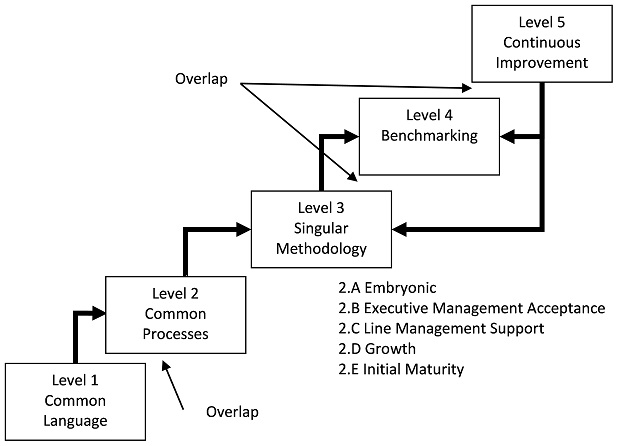Occasionally I speak to a master’s class working towards a Master of Science in Global Leadership degree. Recently I was asked to comment on a student’s analysis of his organization’s project management maturity.
That got me curious about the global distribution of maturity levels, so I went to my reference shelf to check one of definitive studies, “Researching the Value of Project Management” (PMI 2008), by Thomas and Mullaly. (Most project management maturity models have five levels. The diagram shows a typical one, by Dr. Harold Kerzner.)
Organizations at levels 4 and 5 are very rare. Thomas, Mullaly, and their research team examined 60 organizations around the world. The distribution was: (p. 183)
- Level 1: 50%
- Level 2: 47%
- Level 3: 3%
- Level 4: 0%
- Level 5: 0%
They used levels that are slightly different than Kerzner’s model, but still comparable. They say, “This distribution corresponds quite strongly to that seen in other studies (for example, the distributions cited in Mullaly 2006).”
Is this lopsided distribution of achievement OK? I think so. Most organizations don’t have to be “best in class.” Sometimes “good enough” is OK. Getting to the highest levels is a long and expensive journey. Certainly there are corresponding benefits, but many organizations get the most bang for the buck by attaining and then maintaining level 2 or 3.
